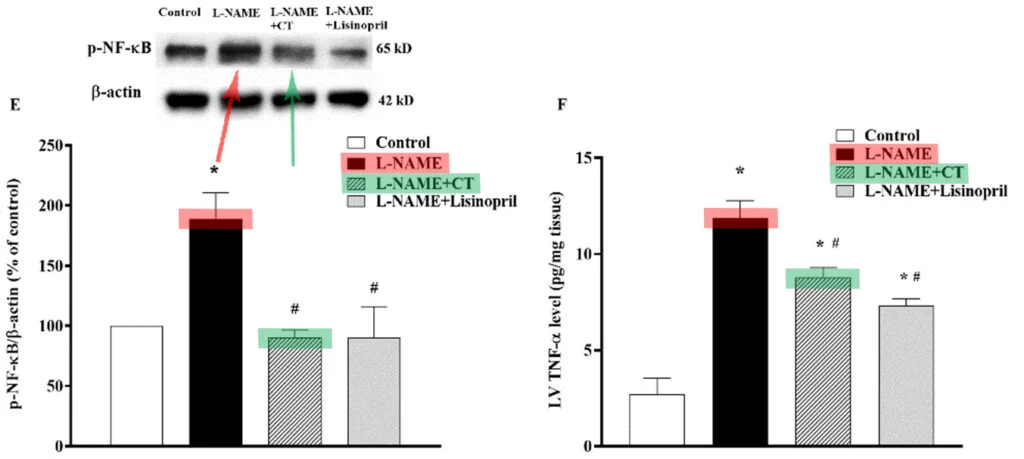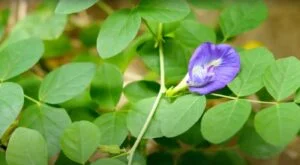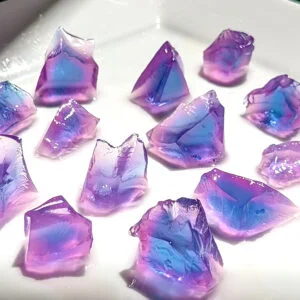Butterfly pea flower extract improves cardiovascular function and reduces oxidative damage:
- reducing systolic blood pressure
- improving relaxation of heart and abdominal blood vessels
- reducing oxygen free radical production
- reducing lipid peroxidation
- decreasing pro-inflammatory protein expression in the heart
Why is this important ?
Cardiovascular disease is the the leading cause of death around the world. The World Health Organization estimates that 1.28 billion adults currently suffer from hypertension, of which only 1 in 5 have the disease under control. The CDC estimates that hypertension costs $131 to $198 billion a year in the United States alone, while the EU estimates that France, Germany, Italy, Spain, and England combined have spent €51.3 billion over the last 10 years on hypertension.
Out of seven recommendations by the WHO on preventing hypertension, five are diet related. In this study, researchers used an animal model of hypertension that mimics human disease progression. Hypertension and oxidative damage was achieved by adding a compound called L-NAME into the diet.
Data from this study shows that adding butterfly pea extract, which is full of antioxidants called anthocyanins, reduced or prevented cardiovascular impairment. It reduced the damage from dietary L-NAME, allowing functions of arteries to return to normal. Dietary butterfly pea also reduced the generation of free radicals and downstream effects like lipid peroxidation to baseline levels.
In most experiments, butterfly pea was as effective as lisinopril, a common drug used to treat hypertension. Let’s let that sink in. Lisinopril was prescribed 91 million times in the USA in 2019 alone, and is a go-to drug for hypertension. While we do not recommend stopping clinical treatment of hypertension, it is very encouraging that butterfly pea could be complimentary tool to help manage hypertension.
Butterfly pea is natural and affordable, and may slow disease progression if consumed regularly and at high strength.
The study:
Maneesai, P, Iampanichakul, M, Chaihongsa, N, Poasakate, A, Potue, P, Rattanakanokchai, S, Bunbupha, S, Chiangsaen, P, Pakdeechote, P, 2021, ‘Butterfly Pea Flower (Clitoria ternatea Linn.) Extract Ameliorates Cardiovascular Dysfunction and Oxidative Stress in Nitric Oxide-Deficient Hypertensive Rats’ Antioxidants (Basel). vol 10(4), 523 Link
Type of study : in vivo animal study of hypertension (L-NAME)
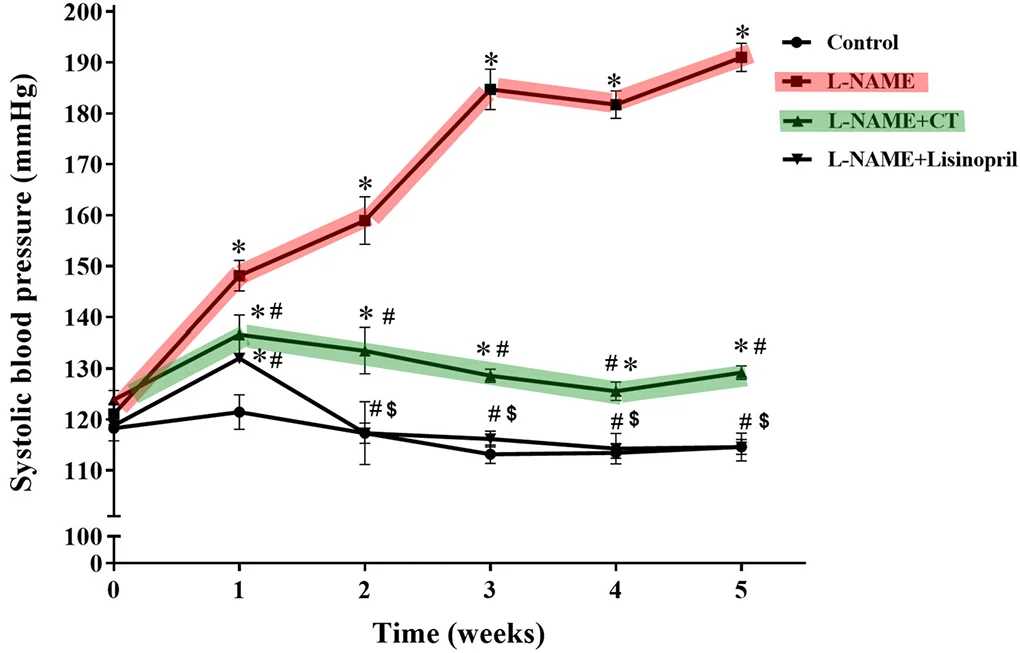
L-NAME is a compound that causes high blood pressure over time. Adding L-NAME to the diet is an established model of high blood pressure (hypertension) in animals, and mimics disease progression in humans.
Lisinopril is a common drug given to hypertensive patients to improved cardiovascular health.
The graph on the left shows the increase in blood pressure over time in rats given food supplemented with L-NAME (L-NAME ; red line). The increase in blood pressure was significantly limited when butterfly pea extract was also added to the diet (L-NAME+CT; green line). Thus, adding butterfly pea extract promoted good cardiovascular health and reduced blood pressure.
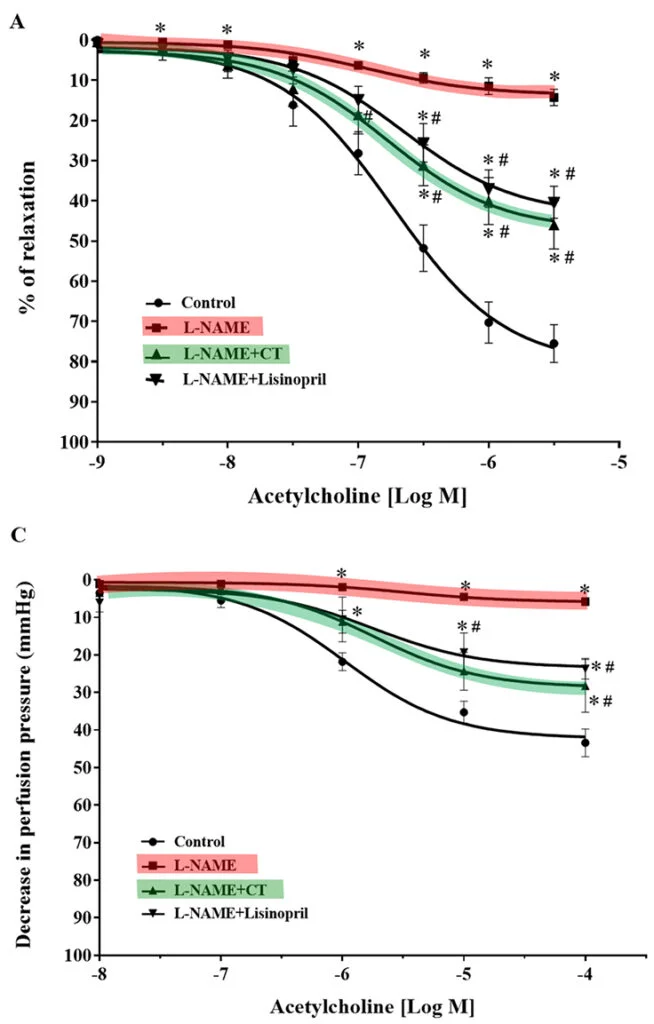
Relaxation of the aorta (heart) was impaired with L-NAME treatment (L-NAME ; red line) compared with the control group (Control). Adding butterfly pea extract into the diet partially restored aortic relaxation (L-NAME+CT; green line). Butterfly pea extract was as effective as the hypertension drug lisinopril (L-NAME+Lisinopril).
The same effect was observed in mesenteric vascular beds (abdomen). A decrease in perfusion pressure was not observed in the L-NAME treatment group (red line) compared with the control group. However, a decrease in pressure was observed in the butterfly pea treatment group (green line). The reduction in pressure using butterfly pea was comparable to lisinopril (L-NAME+Lisinopril).
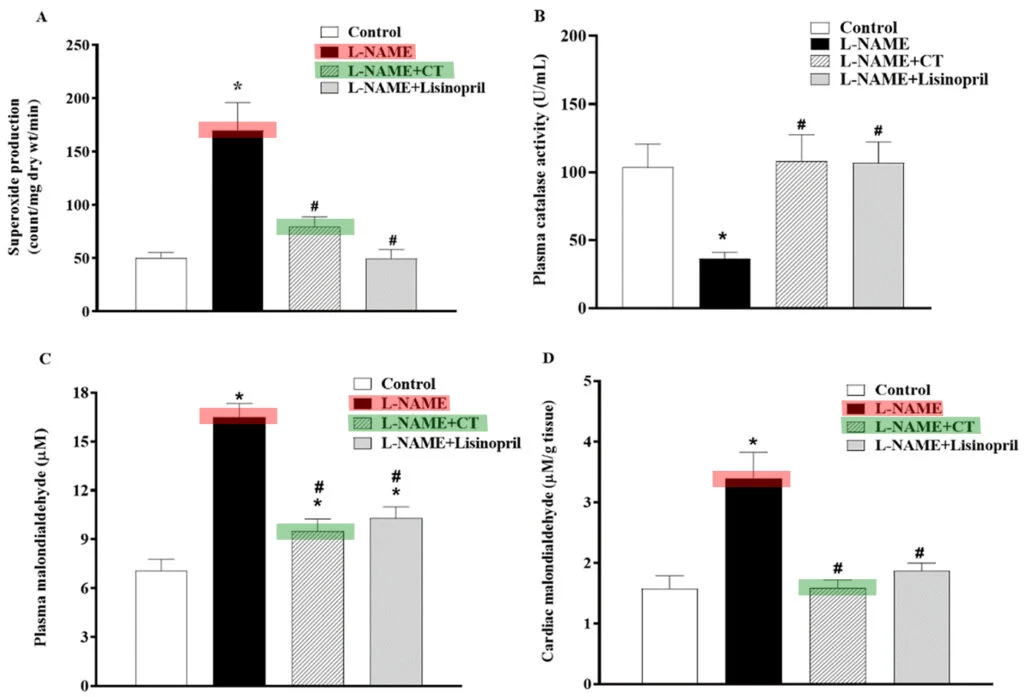
Mimicking the effects seen in humans, the L-NAME treatment group exhibited increased free-radical production (Graph A top left, “Superoxide production” ; red bar) compared with the control group. The level of oxygen free radicals was dramatically reduced when butterfly pea was also added to the diet (Graph A ; green bar).
Increased general lipid peroxidation was also detected in the L-NAME treatment group compared to the control group (Graph C bottom left, “Plasma malondialdehyde” ; red bar). Levels of lipid peroxidation returned to normal with butterfly pea extract (green bar), and lisinopril.
Reduction of lipid peroxidation with butterfly pea treatment was also specifically detected in heart tissues (Graph D bottom right, “Cardiac malondialdehyde” ; green bar v red bar). Butterfly pea was as effective as lisinopril at reducing lipid peroxidation in heart tissues.
And finally, Maneesai et al. demonstrated that treatment with L-NAME increased pro-inflammatory proteins, phospho-NFkB and TNF-alpha, in heart tissue (red bars on both graphs) compared with the control group. Excitingly, a statistically significant reduction in these inflammatory proteins was observed in the butterfly pea treatment group (green bars), which was expected with lisinopril treatment.
